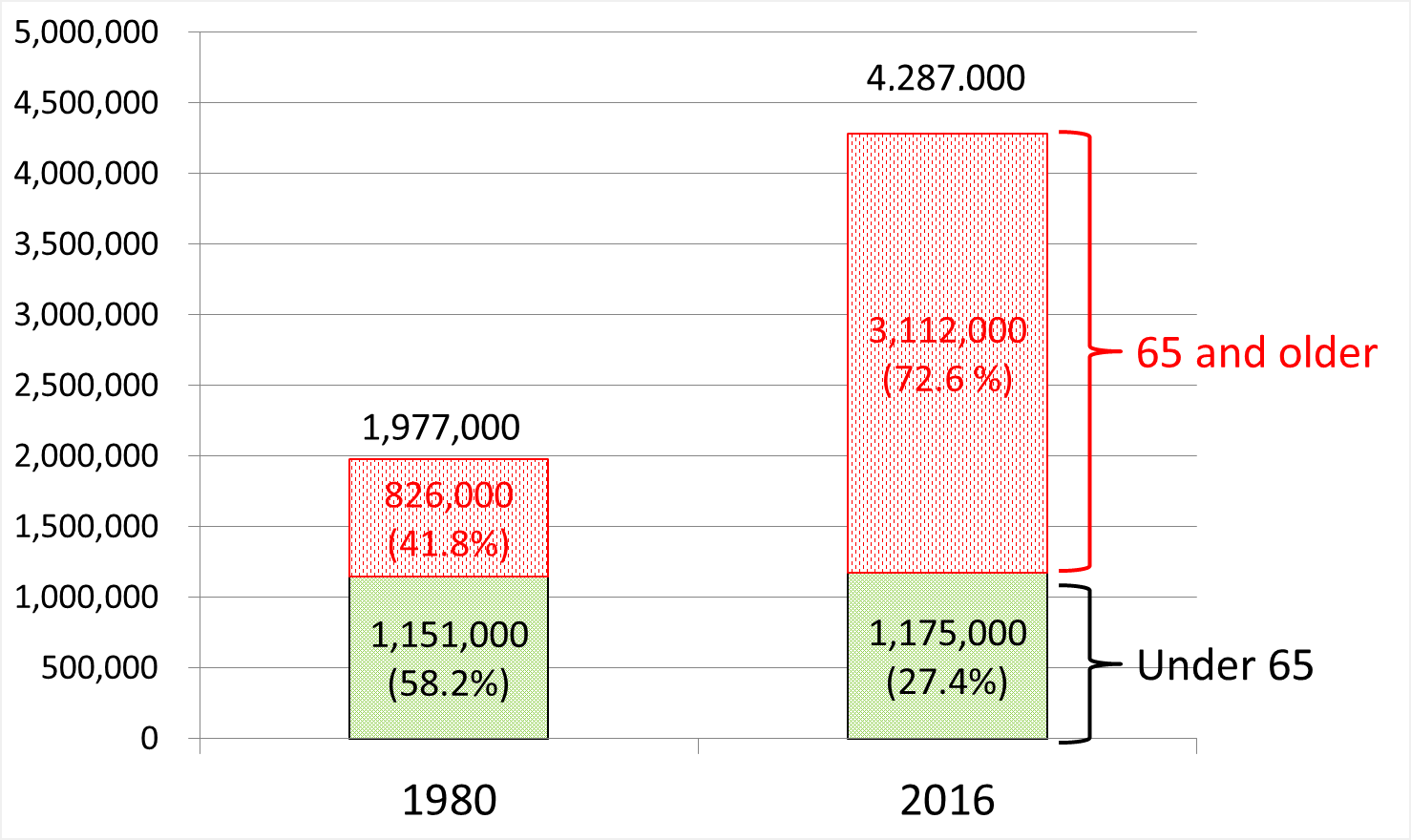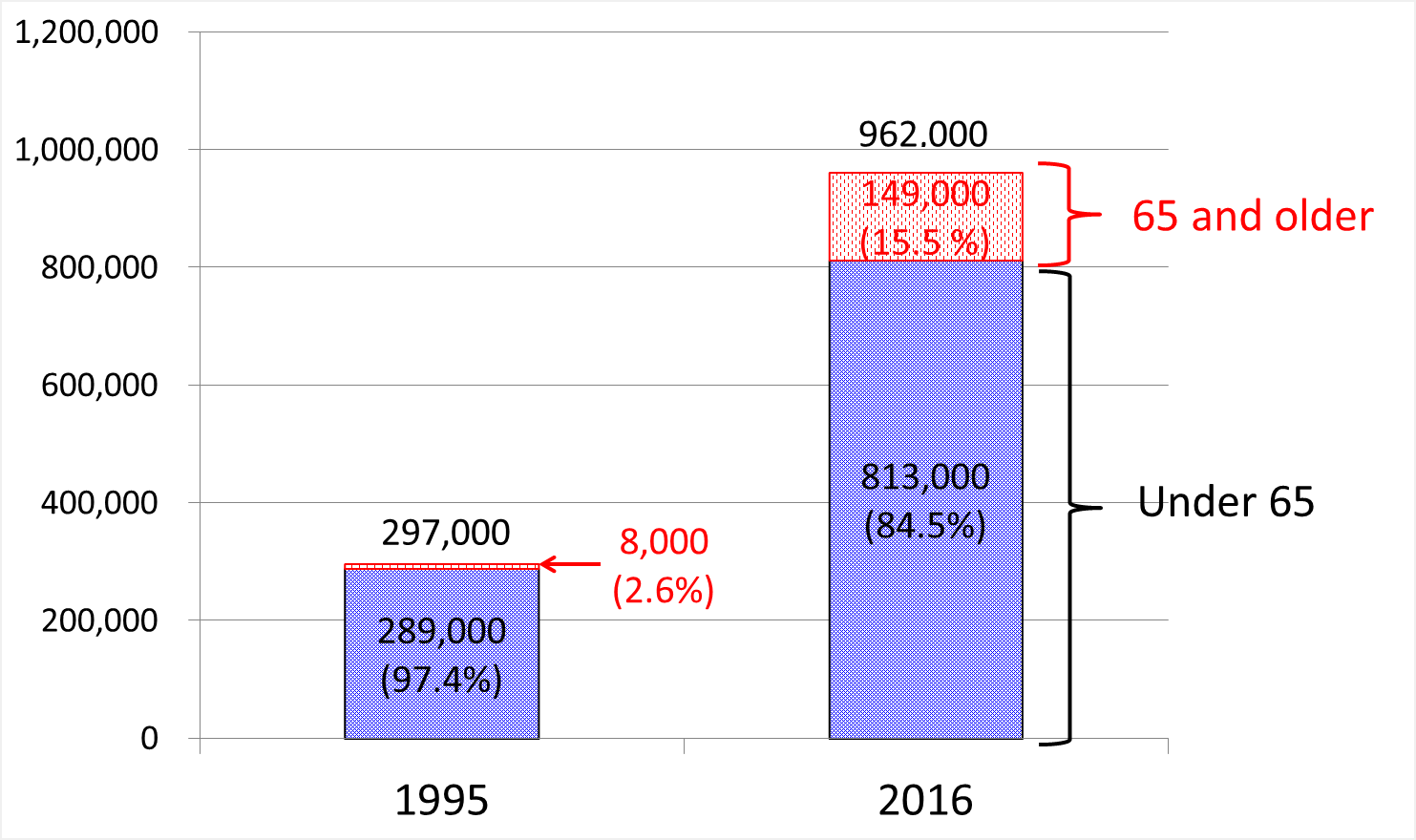Column Finance and the Social Security System 2019.02.08
【Aging, safety net and fiscal crisis in Japan】No.155: Enhancing home care for elderly people with disabilities
The Ministry of Health, Labour and Welfare conducts surveys of people with disabilities in three categories: physically disabled, intellectually disabled, and psychiatrically disabled (Table 1). According to the latest data, there are 4,360,000, 1,082,000, and 3,924,000 people, respectively, in these categories. Since people with multiple disabilities are counted in duplicate, it is meaningless to sum the three categories.
The majority of people with disabilities live at home. As shown in Figures 1 to 3, the number of elderly people with disabilities has increased significantly. Therefore, while building the regional comprehensive healthcare system, the government must pay attention to enhancing home care for elderly people with disabilities.
Table 1: Number of people with disabilities by type (Unit: thousands)

Note: The total does not necessarily match because it has been rounded to two decimal places.
Source: Ministry of Health, Labour and Welfare
Figure 1: Age composition of physically disabled people living at home

Source: Ministry of Health, Labour and Welfare
Figure 2: Age composition of intellectually disabled people living at home

Source: Ministry of Health, Labour and Welfare
Figure 3: Age composition of psychiatrically disabled people living at home

Source: Ministry of Health, Labour and Welfare
